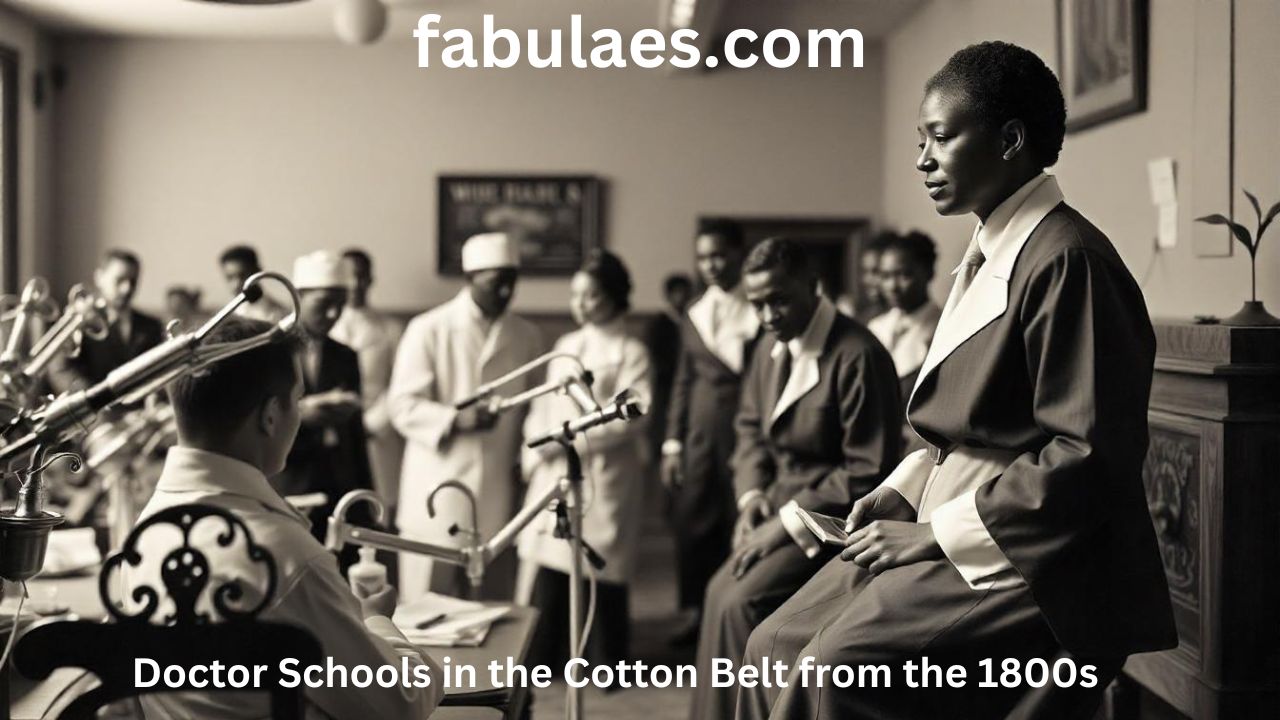Doctor schools in the Cotton Belt from the 1800s played a crucial role in shaping the region’s healthcare system. This area, spanning the southern United States, relied heavily on agricultural prosperity, yet faced unique challenges in training medical professionals. Understanding the history of these schools sheds light on the evolution of medical education and the lives of those who served as physicians in rural communities.
Medical Education in the Cotton Belt: The Early Days
During the 19th century, medical education in the Cotton Belt differed significantly from today’s rigorous standards. Aspiring doctors trained under preceptors—established physicians—while attending occasional lectures. These methods reflected the era’s limited resources and the necessity for hands-on experience.
Challenges in Medical Training
Access to quality education was often limited due to the region’s rural nature. Aspiring doctors faced financial constraints and long travel distances to attend formal lectures.
Role of Preceptorships
Preceptorships formed the backbone of medical training. Young trainees learned directly from practicing doctors, observing surgeries and treatments firsthand.
The Rise of Formal Doctor Schools in the 1800s
By the mid-19th century, formal medical schools began to emerge in the Cotton Belt. These institutions aimed to standardize education and improve healthcare quality.
Establishment of Regional Medical Schools
Schools like the University of Louisville and the Medical College of Georgia offered structured curricula. These institutions combined theoretical knowledge with practical skills.
Curriculum and Training Methods
Students studied anatomy, physiology, and pathology. Cadaver dissections, rare but valuable, provided hands-on learning. Some schools emphasized herbal medicine and homeopathic practices.
Impact of the Civil War on Medical Education
The Civil War disrupted medical schools, forcing many to close temporarily. However, the conflict also advanced surgical techniques and emergency medicine.
Unique Challenges Faced by Doctor Schools in the Cotton Belt
Operating doctor schools in the Cotton Belt during the 1800s was fraught with challenges. These obstacles influenced the quality and accessibility of education.
1. Limited Resources
Many schools lacked modern facilities or adequate teaching materials. Students often relied on outdated texts and limited anatomical specimens.
2. Economic Constraints
The agrarian economy made higher education costly. Only wealthy families could afford to send their sons to medical school.
3. Rural Healthcare Needs
Graduates often practiced in remote areas with few resources. They served as the primary healthcare providers for entire communities.
Notable Doctor Schools in the Cotton Belt
Several institutions became prominent in the Cotton Belt, shaping the region’s medical landscape. These schools left a lasting legacy.
1. University of Louisville School of Medicine
Founded in 1837, this institution became a leading medical school. Its graduates played significant roles in advancing regional healthcare.
2. Medical College of Georgia
Established in 1828, this school focused on producing physicians for Georgia and surrounding states. It emphasized practical training.
3. Tulane University School of Medicine
Located in New Orleans, Tulane blended European medical traditions with local healthcare needs. It attracted students from across the South.
Women and Minorities in 19th-Century Medical Education
Doctor schools in the Cotton Belt primarily catered to white males. However, some institutions began opening doors to women and minorities later in the century.
Women in Medical Schools
Pioneering women faced societal resistance but persisted. By the late 1800s, institutions like the Woman’s Medical College of Pennsylvania accepted southern students.
African Americans in Medicine
Opportunities for African Americans were scarce. Schools like Meharry Medical College, established in 1876, aimed to address this gap.
Influence of Cotton Belt Doctors on Regional Healthcare
Doctors trained in the Cotton Belt significantly impacted healthcare delivery. Their efforts improved public health and advanced medical practices.
1. Combating Epidemics
Physicians tackled outbreaks of diseases like yellow fever and malaria, common in the region. Their knowledge helped reduce mortality rates.
2. Innovations in Rural Medicine
Doctors in rural areas adapted treatments to local resources, developing innovative solutions for common ailments.
3. Establishing Hospitals
Graduates often spearheaded the creation of hospitals and clinics, improving access to medical care in underserved areas.
Transition to Modern Medical Education
By the late 19th century, medical education in the Cotton Belt began to modernize. Advances in science and technology revolutionized training methods.
Standardization of Curriculum
Organizations like the American Medical Association pushed for standardized curricula and licensing exams. These reforms improved the quality of medical training.
Introduction of Laboratory-Based Learning
Laboratories became integral to medical education, allowing students to experiment and practice under controlled conditions.
Influence of the Flexner Report
The 1910 Flexner Report highlighted disparities in medical education. It led to the closure of subpar schools and elevated academic standards.
FAQs
What were doctor schools in the Cotton Belt?
Doctor schools trained medical professionals in the southern U.S. during the 1800s, blending preceptorships and formal education.
Why was medical training challenging in the Cotton Belt?
Limited resources, economic constraints, and the rural nature of the region made accessing quality education difficult for aspiring doctors.
Which schools were notable in the Cotton Belt?
Institutions like the University of Louisville, the Medical College of Georgia, and Tulane University significantly influenced regional healthcare.
Did women and minorities attend these schools?
Opportunities were limited, but schools like Meharry Medical College and the Woman’s Medical College of Pennsylvania helped break barriers.
How did Cotton Belt doctors improve healthcare?
They addressed rural healthcare needs, established hospitals, and tackled epidemics, making significant contributions to public health.
What changes occurred in medical education by the late 19th century?
Standardized curricula, laboratory learning, and reforms like the Flexner Report modernized medical education across the U.S.
Conclusion
Doctor schools in the Cotton Belt from the 1800s represent a fascinating chapter in medical history. Despite numerous challenges, these institutions laid the foundation for healthcare in the southern United States. By examining their methods and contributions, we gain a deeper appreciation for the evolution of medical education and the resilience of those who pursued medicine in this era.











